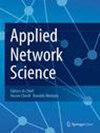使用现金流表征学习识别比特币实体
IF 1.5
Q3 COMPUTER SCIENCE, THEORY & METHODS
引用次数: 0
摘要
由于实体是假名的,无法从链上数据中识别,因此去匿名化是比特币区块链的主要研究挑战之一。存在各种方法来识别同一实体的多个地址,即地址集群。但众所周知,这些方法倾向于为同一个演员找到几个集群。在这项工作中,我们建议根据来自它们的资金污染流的动态图为实体分配指纹,我们可以识别属于同一实体的多个地址簇,因为它们具有相似的指纹。在使用表征学习模型嵌入污染流之前,我们尝试了不同的配置来从污染流中生成子结构模式。为了评估我们的方法,我们训练分类模型从指纹中识别实体。实验表明,我们的方法可以准确地对三个数据集上的实体进行分类。我们比较了不同的指纹策略,并表明包含事务的时间性可以提高分类准确性,而长时间跟踪流会损害性能。我们的工作表明,流出指纹是识别同一实体的多个集群的有效方法。本文章由计算机程序翻译,如有差异,请以英文原文为准。
Fingerprinting Bitcoin entities using money flow representation learning
Abstract Deanonymization is one of the major research challenges in the Bitcoin blockchain, as entities are pseudonymous and cannot be identified from the on-chain data. Various approaches exist to identify multiple addresses of the same entity, i.e., address clustering. But it is known that these approaches tend to find several clusters for the same actor. In this work, we propose to assign a fingerprint to entities based on the dynamic graph of the taint flow of money originating from them, with the idea that we could identify multiple clusters of addresses belonging to the same entity as having similar fingerprints. We experiment with different configurations to generate substructure patterns from taint flows before embedding them using representation learning models. To evaluate our method, we train classification models to identify entities from their fingerprints. Experiments show that our approach can accurately classify entities on three datasets. We compare different fingerprint strategies and show that including the temporality of transactions improves classification accuracy and that following the flow for too long impairs performance. Our work demonstrates that out-flow fingerprinting is a valid approach for recognizing multiple clusters of the same entity.
求助全文
通过发布文献求助,成功后即可免费获取论文全文。
去求助
来源期刊

Applied Network Science
Multidisciplinary-Multidisciplinary
CiteScore
4.60
自引率
4.50%
发文量
74
审稿时长
5 weeks
 求助内容:
求助内容: 应助结果提醒方式:
应助结果提醒方式:


